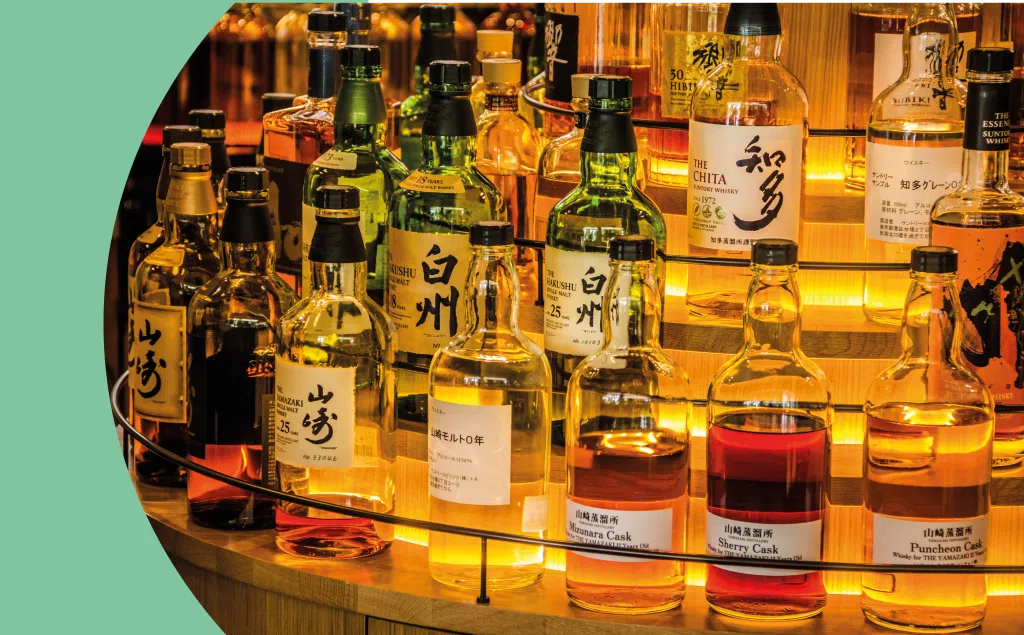Sotol—the little brother to agave’s better-known spirits Tequila and Mezcal—is known locally in Western Mexico as a fiery drink, and is creeping its way into bartending culture. But outside of mixologist menus, it’s still largely undiscovered.
We spoke to agave enthusiast Kat Stanley-Whyte of The Savoy, London, about this old-yet-new spirit and why it’s making waves in the industry.
It All Begins with the Sotol Plant:

Unsurprisingly, Sotol (the spirit) comes from sotol (the plant).
Known as ‘dasylirion genus’, Sotol is a wild shrub-like plant, similar to the tequila and mezcal agaves.
However, this is where the similarities end. Sotol is actually part of the asparagus family which gives it its unique character, distinct from other agaves. It also loves to grow in the most awkward of places, such as the rocky slopes of Chihuahua.
And, unlike the Blue Weber agave, sotol is regenerative and doesn’t die after flowering, which means that sotol farmers are able to reharvest. For comparison, the Blue Weber is only able to be harvested once, following seven years of nurturing. This makes the sotol plant not only environmentally sustainable, but also economically. Plus, most often, only wild sotol is harvested, saving on replanting and watering costs, making it a win-win for the sotol farmers.
More about: Tequila Drinks – Mezcal Drinks
Long, Rich Heritage
Sotol has a rich history that traces back thousands of years, so despite the recent hype, it’s nothing new.
Indigenous groups across Mexico, Texas and Arizona have utilised the plant for generations, whether that be for weaving, eating or even using its leaves as a spoon.
But where did the actual spirit come from?
It’s rumoured that Al Capone came to Chihuahua in the 1920s, tasted Sotol, fell in love and brought it back to Chicago to supply his late-night escapades. But the real introduction of the spirit can be attributed to the Spanish Conquistadors and their copper stills.
Prior to this, the juices of the shrub were fermented to make a beer-like beverage used in rituals and ceremonies (similar to that of Pulque—a traditional Mexican drink). However, once the Spanish arrived with their distilling abilities, pure Sotol was born and has lived on ever since.
Mexican producers would regularly make the spirit and send it over the border as a moonshine equivalent during Prohibition. The government, however, did not approve of this, and duly banned Sotol’s production in Chihuahua, stopping its commercialisation, sales and consumption.
Once the ban was overturned, Sotol’s life didn’t get any easier. It was hit by a defamatory marketing campaign in the 1980s and 1990s. The drinks industry declared Sotol a ‘low-class’ spirit, which severely hit local producers. Since then, these same producers have worked hard to restore its reputation to make it desirable once again.
Drinking Sotol the Right Way
So, how do you drink it?
First things first, let’s get the glass right.
It’s important to use a large-nosed glass, just as you would with mezcal. By using one of these glasses, you allow the Sotol to develop a little and offer up its magic.
I’m an avid fan of sipping Sotol neat, so for me, this is the best way to drink it.
You get to fully experience the flavour profile and understand the personality otherwise lost amongst other ingredients. Sotol has a broad spectrum of aromas and the terroir really shines through, enabling the drinker to taste the variety of lands it’s been grown on.
Alternatively, you can take it with other elements. I love a simple highball serve when introducing newcomers to the spirit. A blend of fresh tonic, rosemary and lime paired with a smoky Sotol is a match made in heaven.
Given its diversity and flexibility, I’m putting money on Sotol becoming the new bartender’s go-to, it’s already mine!
Turning Sotol into Sotol
Production is similar to that of tequila and mezcal as is its classification.
The shrub is harvested, with the piña broken into quarters or thirds depending on size. It’s then cooked underground to give it its distinct flavour. The plant fibres are then mashed before being fermented and finally distilled.
Classification is also similar with there being plata, reposado, añejo and extra añejo varieties of Sotol. But whilst tequila is well known for its peppery kick, Sotol has more subdued grassy notes with smoky undertones.
Sotol has had a ‘Denomination of Origin’ (D.O.) since the early 2000s and is produced under the name in the Mexican states of Chihuahua, Coahuila and Durango.
Unlike other Mexican agave spirits, its D.O. is not recognised in the USA, who instead make their own Sotol, causing some confusion. It’s most commonly made in the state of Texas, hence the name ‘Texas Sotol’ and doesn’t need to be the dasylirion genus, like in Mexico. In our opinion, it’s best to avoid it.
Production Experimentation
These days, more experimentation is taking place within production.
Producers of Sotol in Durango, where it’s recognised as a state spirit, choose to make Sotol using similar Mezcal processes. The sotol is harvested, cleaned and brought back to the distillery where it goes through the journey of a smoky slow cook inside a volcanic fire pit, before being ground in a mill to collect the juicy fibres. Eventually, it’s covered and naturally fermented for a further 2-3 days.
Up in the Lone Star State, steaming has become the norm for cooking the sotol piñas. This creates a lighter, herbaceous, smoke-free flavour, popping with notes of fresh mint, lime and vanilla—very different to that of Mexican Sotol.
Within distillation, some producers are now using a double distillation process, giving the Sotol a smooth, clean finish with strong earthy, grassy notes.
A Sustainable Future
Within Mexico, the existential rise of agave spirits has put untold pressure on bat and bee populations, which pollinate the plant. In addition to this, the rise is threatening the livelihoods of smaller, family-run productions.
Subsequently, a strong sustainability movement has emerged within the sotol and agave industry. This is mainly to protect the plant in the wild, ensuring it’s not being over-harvested.
The Mexican government has designed some sustainability ‘hurdles’, requiring producers to only harvest at most 40% of mature wild sotol in their area. It’s hoped it will guarantee the longevity of the plant for future generations. Some distilleries have already begun planting sotol for future harvests, as a result.
Given the rising popularity, it’s hoped that these measures will secure Sotol’s place within the drinks industry for years to come and eventually find its way to a bar near you!








